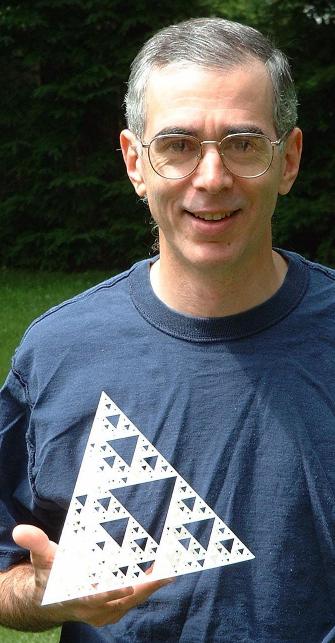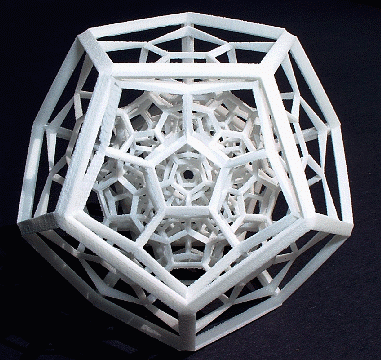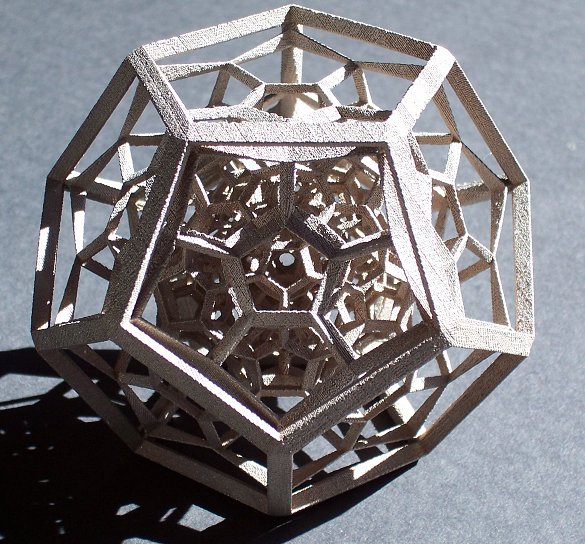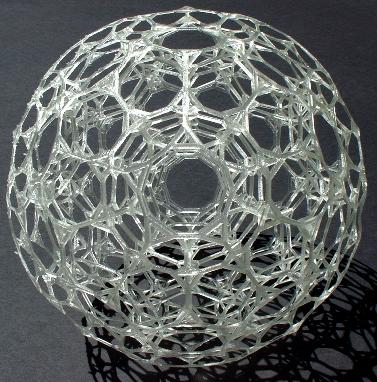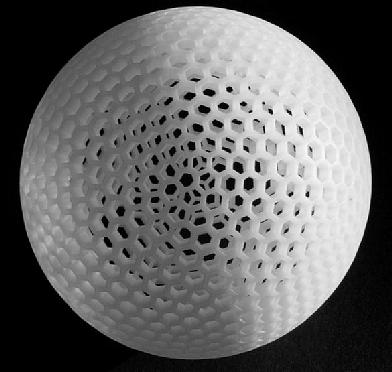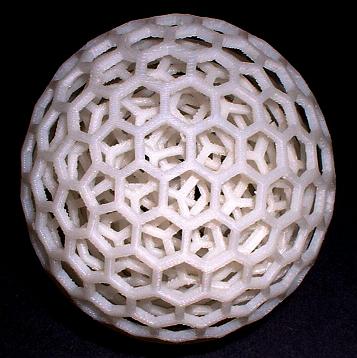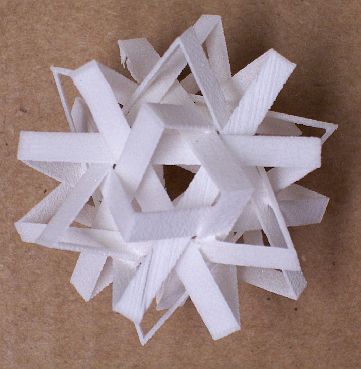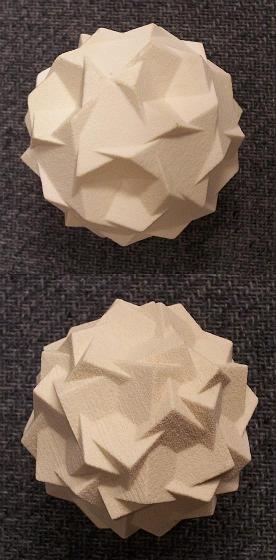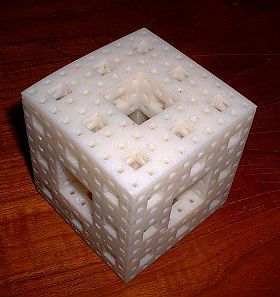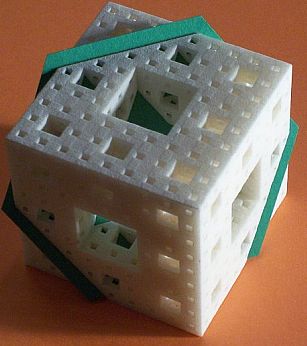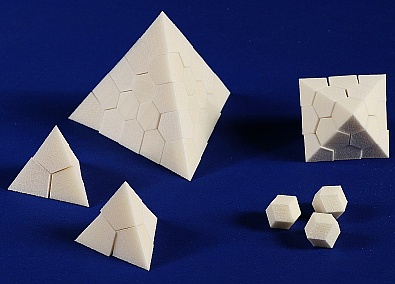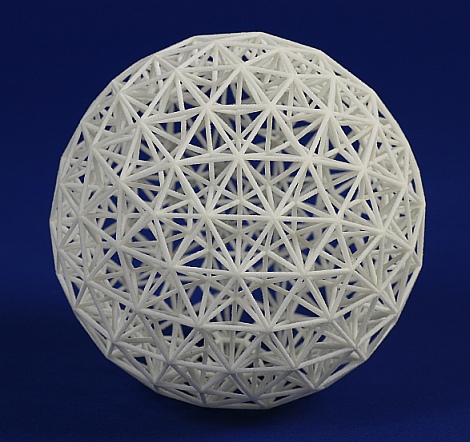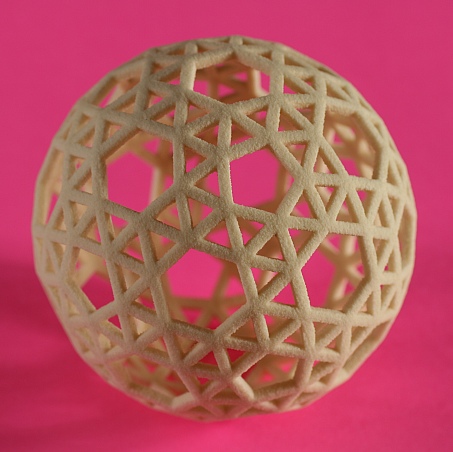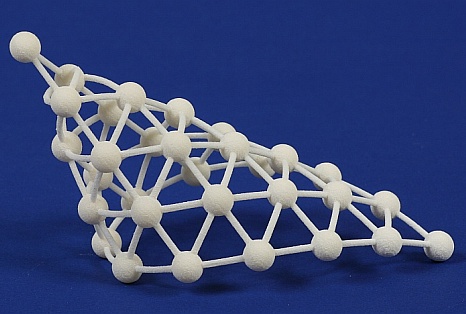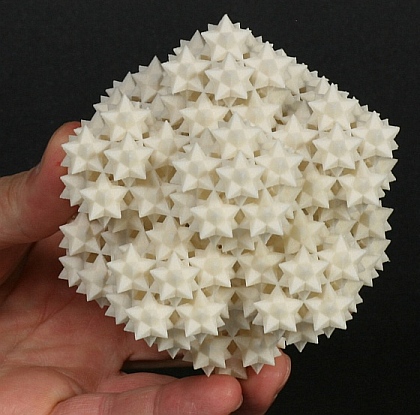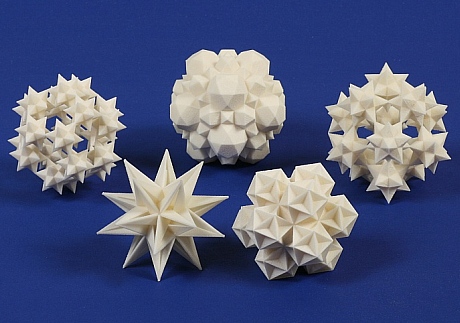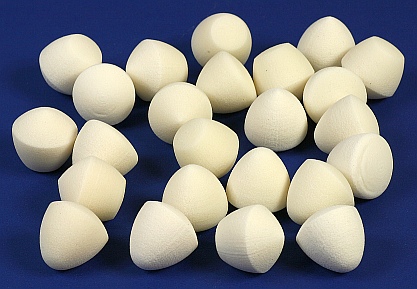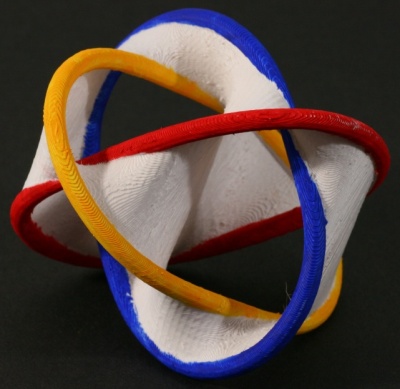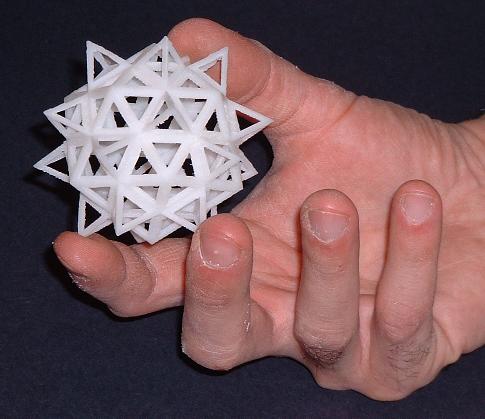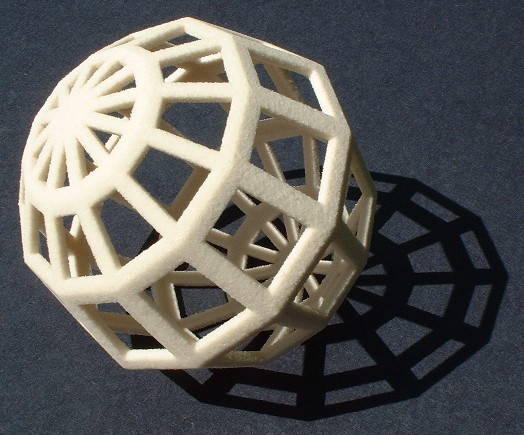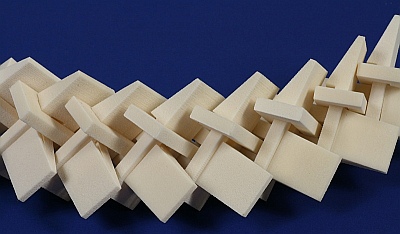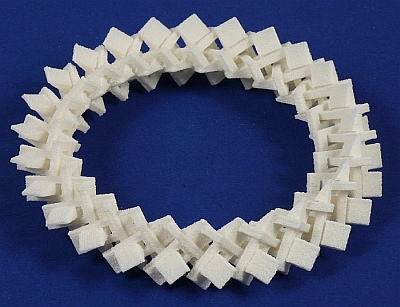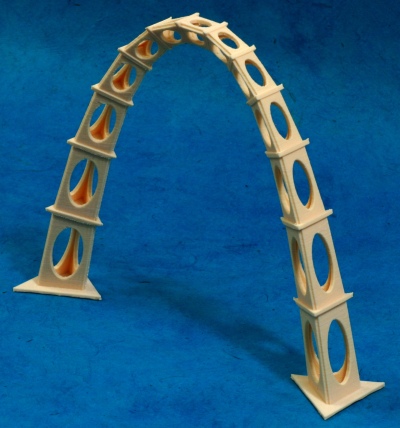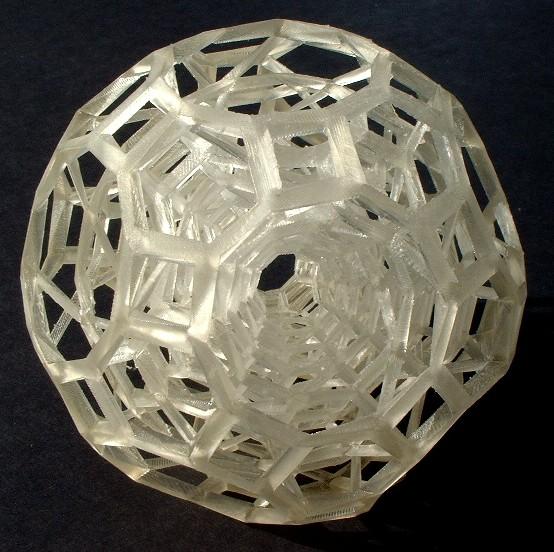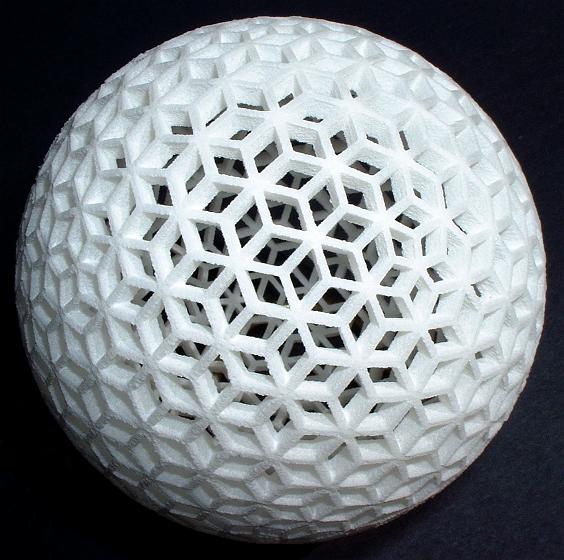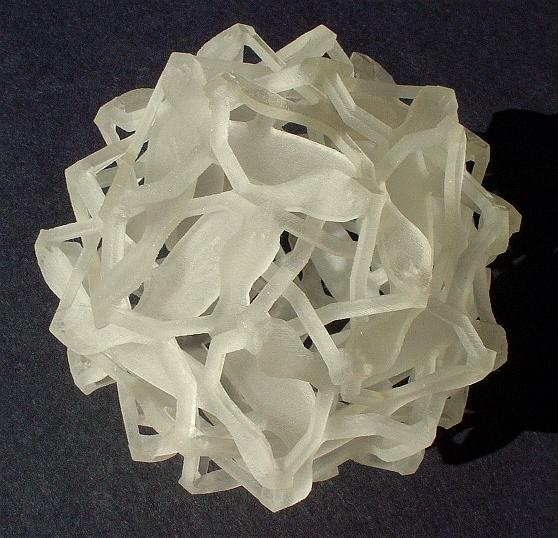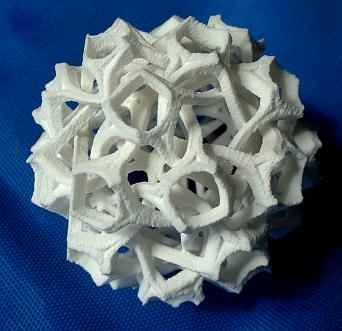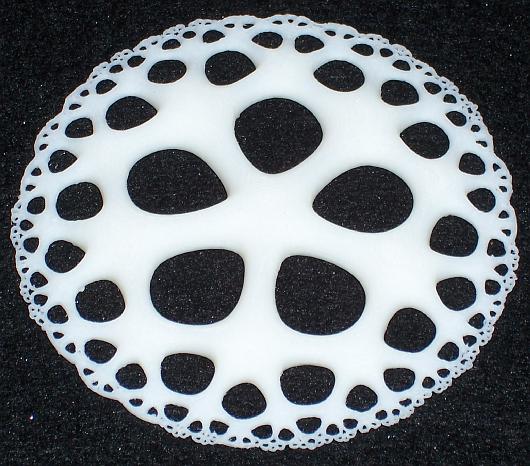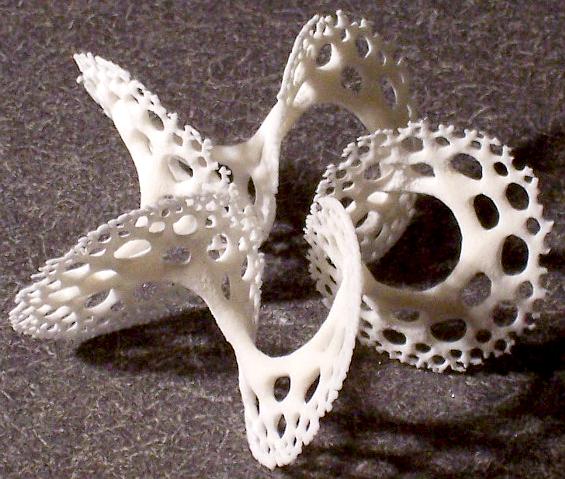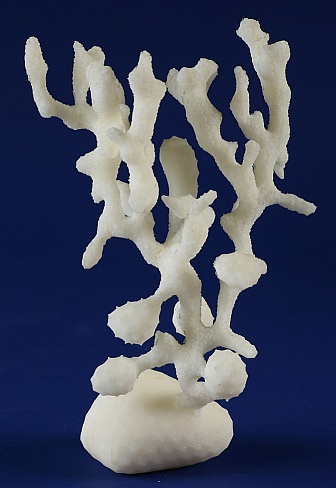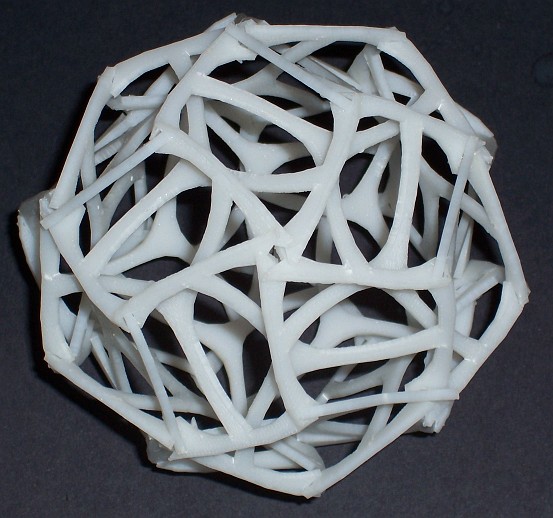George W. Hart's
Rapid Prototyping
Web Page
I am active in using rapid prototyping
(RP) technology for a range of purposes, including art,
math, and education. This page collects in one place some
models I have designed, with links to papers that have
further information about the algorithms, etc. Files for
most of these models are provided, which you are welcome
to download and replicate on your own RP machine, as long
as you give me design credit when displaying them.
To download the files on a PC, right-click on them, select Save-As, and give them a file name ending in .stl On a Mac, something similar should work. If you have comments or suggestions about these models, please send me email.
This image shows me with a Sierpinski Tetrahedron model, described below.
I've also written separate pages for:
To download the files on a PC, right-click on them, select Save-As, and give them a file name ending in .stl On a Mac, something similar should work. If you have comments or suggestions about these models, please send me email.
This image shows me with a Sierpinski Tetrahedron model, described below.
I've also written separate pages for:
- models I have made with my Makerbot
- models I have made with my Thing-O-Matic
- models I have made with my Replicator
- 3D Printing Mathematical Models
- The Surprising Menger Sponge Slice
- The Golden Ratio Nautilus
- Creating Life
- Light
Stick Ball
